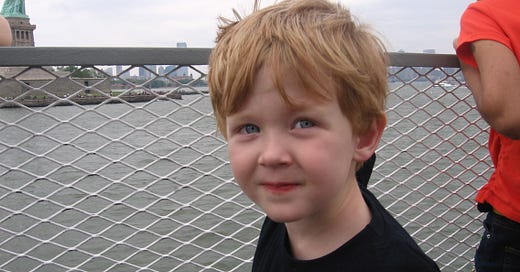Vaccinate Kids with Disabilities ASAP
Since schools and state services shut down in the second of week March – a full nine months ago – children with disabilities have been neglected and isolated. I’m an education writer, who specializes in disability issues, and a parent of a child with autism, so I hear horror stories every day during interviews and informal chats with friends.
Parents tell me that their kids with autism haven’t left their homes in months and have no contact with peers their age. Therapists in schools whisper that their students with physical disabilities have not had legs stretched or strengthened. Teachers confide that it’s super hard to keep children and teens with intellectual and attentional disabilities glued to a computer screen all day. The impact of this pandemic and the hiatus on education for this vulnerable population has been even worse than I predicted back in March.
As we make various calculations to determine who should get priority for the coronavirus vaccine, let’s put disabled kids, their families, their teachers, and therapists to the front of the line. Those kids need to be back in school and getting in-person state services as soon as possible. Right now, there is no special status for these children and their helpers on the vaccine list, despite their dire needs.
All children have suffered since schools have shutdown, for sure, though we don’t know the extent of learning loss. Based on the numbers of children who have not participated in remote education and lack the necessary technology at home to engage effectively in remote education, COVID learning loss will be real and significant. Schools will need to do major catch up to meet the needs of all students, when schools open properly. However, the suffering of special needs kids and their families are so intense that we must consider prioritizing this population.
In addition to extra academic support, schools provide special education students with vital speech, fine-motor, physical, behavioral therapy. Extensive research shows that intensive therapy reaps the most success when children are young, when their brains are plastic and most open to interventions. With nearly a year gap in these services, young children have already lost critical time when learning to walk, talk, and control autistic behaviors.
Here in New Jersey, Early Intervention, a state-run program, provides in-home therapy before school districts take over at age three. For most of the year, therapists used Zoom to verbally coach parents, some of whom do not speak English, to do the exercises that stretch out the limbs of toddlers with cerebral palsy and strengthen mouth muscles of children with nonverbal autism. Therapists tell me that it didn’t work. If COVID rates rise again, services will again go virtual.
Although a physical therapist is permitted to stretch out a muscle knot in my shoulder twice a week, a therapist hired by the state cannot help a two-year child with cerebral palsy learn to walk. For some reason, therapy for adults is considered an essential medical service, while therapy for a child is not. Clearly, we need to rethink what is “essential.”
At local soccer and baseball fields, various youth sports leagues practice and hold matches all weekend. There, kids get exercise and socialize, as do their parents on the sidelines. Kids with special needs do not have access to those opportunities. In towns where schools have remained remote all this fall, students with disabilities have had no contact with other children in months. My friends with kids on the autistic spectrum say their kids have regressed socially and are depressed.
The burden on parents of special needs children has been enormous. There is ample data showing that school closures have placed a huge burden on parents, particular mothers, to supervise remote education, forcing many women to leave the workforce. Teachers and therapists tell me that children with disabilities have even more need of a parent to help them concentrate on the computer screen and to listen to a therapist’s instructions about holding a pencil. Mothers can’t work, because they have become full time special education teachers and therapists.
Not only are many parents unable to work, but they also have no relief, no break in their caretaking responsibilities. Children with more extreme disabilities have overwhelming needs. Without months of schools, camps, and state programs, parents are at their breaking point.
Instead of becoming adjusted to the status quo, parents tell me that their kids are also at the limits of endurance. When the school bus for one friend’s son with autism didn’t show up last week, she jumped in the car to drive him. The boy treasures his two days of in-person education per week, but had a meltdown before she drove very far. This change in routine, after so many months of disruption, was too much for him. She turned the car around and took him home.
Our situation is better than most; my son’s needs are relatively mild, and my job is flexible, so I can absorb the extra work. But I, too, am very tired and worried. At the end of all this, how rusty will my son’s social skills be with so little in-person education? How much regression in his conversational skills has happened already? What will be the long term implications from a year’s loss of therapy and in-person education?
While the competition to be first on the list to get the vaccine is certain to become tense, let’s not do what we always do -- put the disabled community to the end of the line. Instead, let’s put them first.



